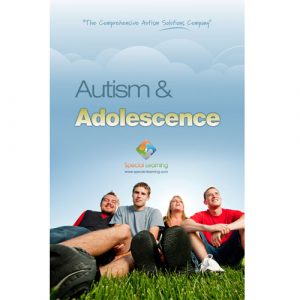Divorce
Going through a divorce is a very stressful and traumatic event that is not unlike a bereavement. There are stages of grief to go through, and there are likely to be feelings and sentiments of a loss of hope and dreams. Although there may be existing problems or reasons why marriage is faltering, having a child who needs a lot more extra time and attention, as well as additional resources, can take its toll.
According to a recent study (Hartley et al.), parents of a child with an autism spectrum disorder had a higher rate of divorce than a comparison group, and this rate remained high throughout the son or daughter’s childhood, adolescence, and early adulthood.
Any of the stages or landmarks in the child’s development can introduce its own particular stresses or strains within the family and can cause a marriage to gradually break down over time.
Early Years/Diagnosis
The stress and strain of having a special child but not knowing what is causing the child’s problems put an extra burden on a relationship that may already be struggling. When the diagnosis occurs, parents sometimes blame themselves for the child’s difficulties as they search for answers or reasons for what has happened. Counseling can be beneficial to talk through these issues.
Mothers may do more than what would be expected for a child that develops in a straightforward way. Fathers may throw themselves into their job and often work longer hours; sometimes this serves as an escape from what is happening at home, or it is a means to provide the extra money needed for any additional resources.
Adolescence
These years can be challenging as the child becomes bigger and less easy to handle. Puberty and developing sexuality can exacerbate any existing behavioral problems.
Adulthood
There are concerns for the future, such as independent living and continuing services, which can add extra worries and concerns within the family unit.
During any of these stages, couples may find they have grown apart, are leading separate lives, or are simply growing in a different direction from one another. However, there is always hope to save a failing marriage, or even prevent its demise. A marriage can be strengthened if couples are united and if they can re-evaluate their priorities so that the family comes first. A good plan of action would include finding activities to enjoy together as a family — weekly outings, respite care, a supportive extended family, and support groups.
If, however, divorce becomes inevitable, it is important for parents to take care of their needs, for example, by talking things through with friends, or maybe a professional counselor or church counselor. There may be a number of changes taking place, such as moving house, as well as all the emotional issues to be faced and dealt with.
Children can become very unsettled if there is turmoil at home and may exhibit behavioral changes, such as acting up more or developing skin rashes due to stress and anxiety. They need reassurance and to know if their schedule changes, including when they will see a parent again. To adjust, help and guidance may need to be sought from a professional. It is important to tailor language to the child’s level of understanding without too much detail about what is happening. The use of picture cards may be helpful as an aid to understanding for younger children.
Divorce is never easy for all the people involved and affected. The process can be made a lot less dramatic by focusing on the particular needs of family members to make the transition easier for all involved. Divorce is not inevitable, however. Having a child with autism can bring some couples closer together. A united couple and a good plan of action are helpful.
References:
National Center for Biotechnical Information. (n.d.). NCBI.NLM.NIH: The relative risk and timing of divorce in families of children with an autism spectrum disorder (Hartley et al.) Retrieved April 24, 2011, from http://www.ncbi.nlm.nih.gov/pubmed/20731491
Copyright © by Special Learning Inc. All right reserved.
No part of this article may be reproduced in any manner whatsoever without written permission except in the case of brief quotations embodied in critical articles and reviews. For information, contact Special Learning Inc., at: contact@special-learning.com








